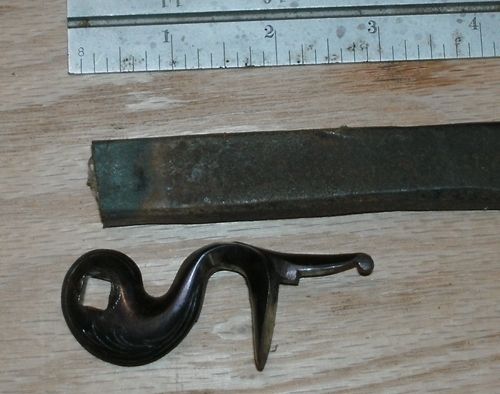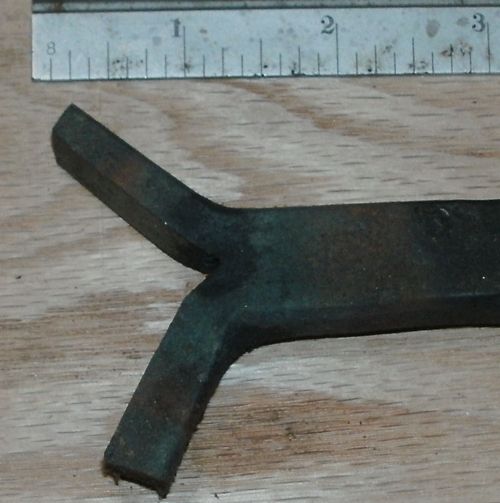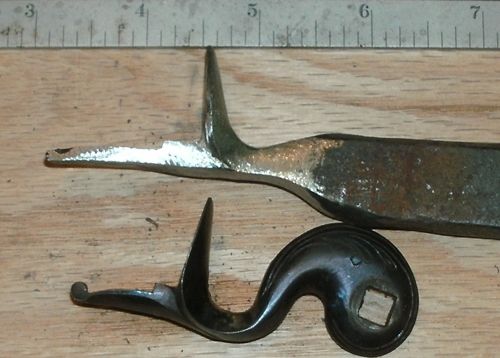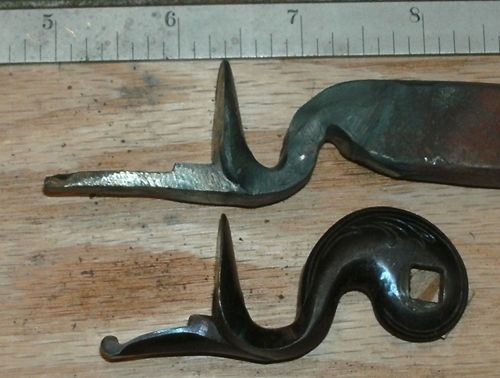Guys,
Now that I am back in the USA, it is time to do a bit more work on this gunlock. This is forging the flintlock cock, a fun or a frustrating job depending on one's point of view. We start with an existing cock that is artistically what we want as a finished piece. The raw material is some nicely refined wrought iron from a set of blacksmith tongs. Here is the iron and the cock pattern.

Using a hacksaw, split the iron as shown.

Heat the iron orange hot at the end of the split and open to about a right angle. Generally this results in a tear at the end of the split. The tear is closed using a punch that looks a lot like a very dull cold chisel. Also, this tool is very handy for making the major bend for a mainspring. Hammer the punch down into the split until the tear disappears.

Next, hot forge the piece to thin and widen the two leaves and to thin the shank just below the split. Forge at orange heat.

Forge the leaf that will be the lower cock jaw to a "duck foot" shape and turn the part until the lower jaw leaf is at a right angle to the shank.

Now, do a lot of rough shaping with a coarse file to bring both the lower jaw and the thumb piece to near final dimensions.

Next, make the initial or top bend to match the pattern cock.

Now for a tricky part, the second or bottom bend. You will find that this is difficult to do without some sort of special tool.

This is necessary so that the grain of the wrought iron will follow the curve of the cock. I will end this post here and add to it later as it may be too large a file with all these photos.
Jim

